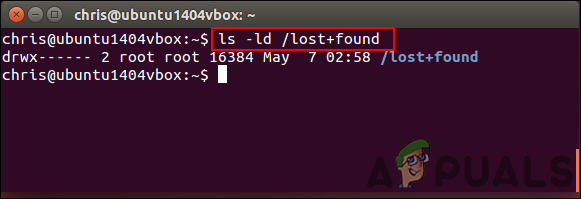How to Check Your Computer’s Uptime and Installation Date?
Understanding how long a device has been running and when its operating system was installed can be helpful in different scenarios. Sometimes a user will need to restart the system to update their system. It is a good option to compare the dates of the last restart and new updates, which gives a good idea of the restart requirement. The same goes for the time of the operating system installation. It is also pretty cool to check the uptime and installation date of your operating system. In this method, we will show you methods for Linux, macOS, and Windows operating systems.
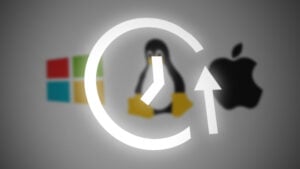
Uptime and Installation Date on Windows
Uptime
There are several different ways to check the uptime of the Windows operating system. We will try to include all the methods through which you can view uptime in Windows. You can use any one of the below methods, it’s up to you.
The easiest way to view the uptime is through the Task Manager. Open the Task Manager by pressing the Ctrl+Shift+Esc keys together. Now click on the Performance tab and check the Uptime at the bottom of the window.
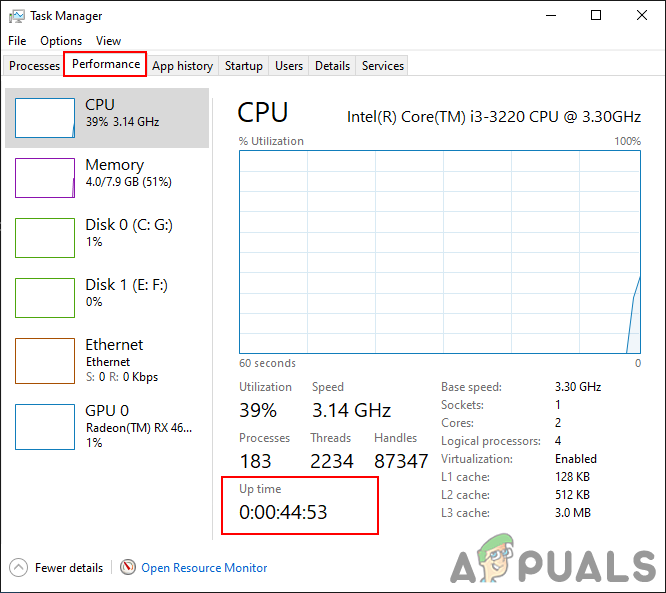
Open the Command Prompt through the Run dialog or through the Windows search feature. Now type the following command in it and press the Enter key to view the uptime:
systeminfo | find "System Boot Time"

Another way to view the uptime is by using the WMIC. You need to type the following command in the command prompt. However, this command will show the date of the last reboot in some rough format.
wmic path Win32_OperatingSystem get LastBootUpTime

Note: The output will mean, the Year 2021, Month 03, Day 12, Hour 15, Minutes 58, Seconds 37, Milliseconds 500000, and +300 is three hundred minutes ahead of GMT. Therefore, it will be March 12, 2021, at 03:58 PM GMT+5.
You can also use Windows PowerShell to find the time of the last boot. Search for the PowerShell in the Windows search feature and press Enter to open. Now type the following command press the Enter key.
(get-date) - (gcim Win32_OperatingSystem).LastBootUpTime
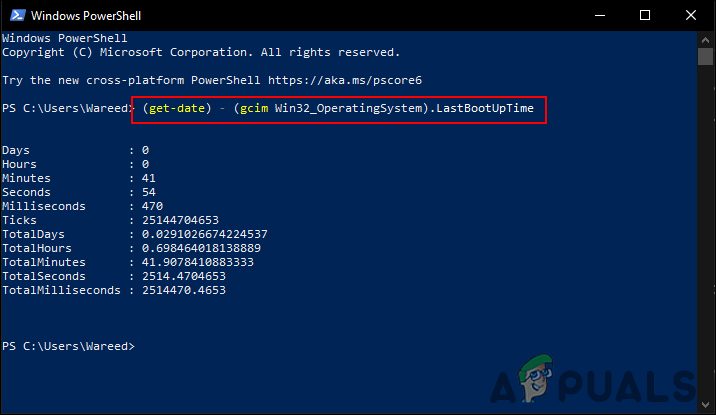
Installation Date
The Installation date is also listed under the System Information. Open the Command Prompt through the Windows search feature. Now type the following command press the Enter key to view the installation date:
systeminfo | find “Original”

Uptime and Installation Date on macOS
Uptime
You can also check the uptime of the system through several methods on your macOS. The first that we are going to check through is by the System Information window. Click on the Apple menu icon on the bar at the top left corner. Now hold the Option key and click on the System Information option. Now on the left pane, scroll down and select the Software option. In the System Software overview, you can find the Time since boot at the bottom. This will be the uptime of your system.

Another method through which you can view the uptime is by using the Terminal. First, open the Spotlight by pressing the Command and Space Bar keys together. Now type Terminal and press the Enter key. Now simply type the following command to view the uptime.
uptime
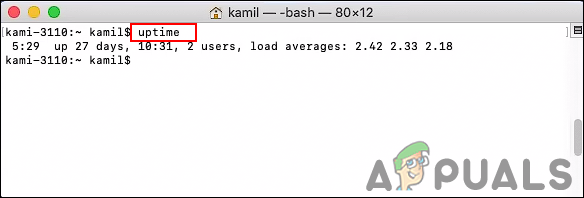
Installation Date
You can check the installation date of the macOS through the following methods.
Hold the Command key and press the Space Bar to open the Spotlight. Now type terminal and press the Enter key to open it. Now type the following command press the Enter key. This will show the date of the operating system installation.
ls -l /var/db/.AppleSetupDone
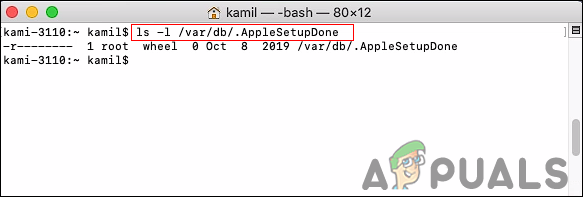
Another way to find the exact date of installation is by using the Console app. Press the Command + Space Bar keys together, then type Console in Spotlight and press the Enter key. Navigate to the Install.log report. After opening the install.log, move the page to the top and check the date it shows on the first line. You can find this in the Log Reports as shown below.
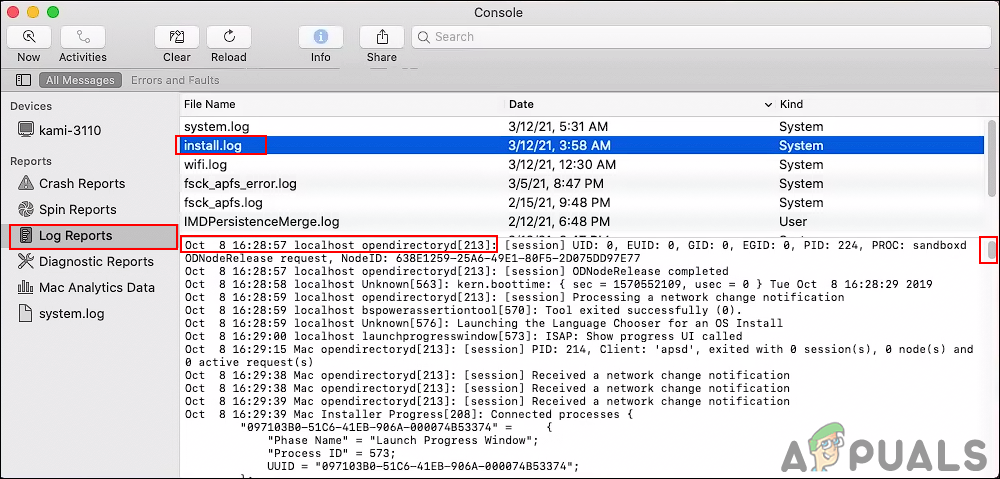
Uptime and Installation Date on Linux
Uptime
Checking the uptime in a Linux operating system is pretty much easy. Linux has a dedicated uptime that displays the uptime information of the system. Press the Ctrl+Alt+T to open the Terminal. Now type the following command to view the uptime:
uptime
This will show the current time, then the uptime, the number of users, and the average loadout.
You can also type the same command with -p as shown:
uptime -p
This will show the time in a much human-friendly format.
You can also type -s with this command. It will show the last reboot time for the system:
uptime -s
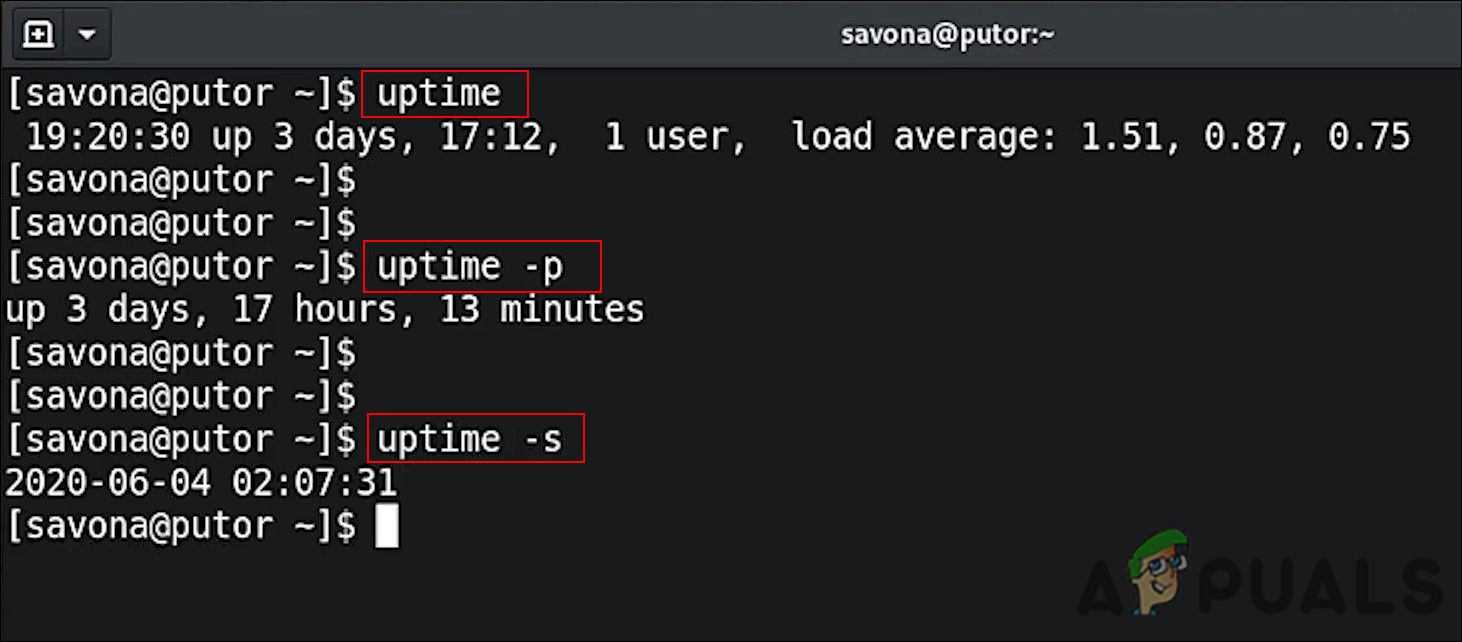
Installation Date
We can check the Installation date of the Linux operating system by checking the date of a directory that was created when the operating system was installed. In our case, we are checking the /var/log/installer directory. Press the Ctrl+Alt+T keys together to open a Terminal. Now type the following command and press the Enter key.
ls -ld /var/log/installer
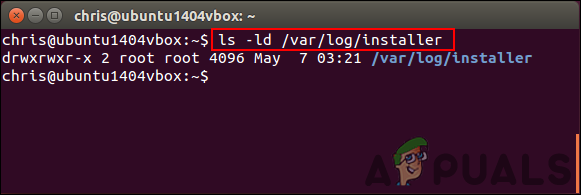
Another folder that can give the exact date of the installation of an operating system is the /lost+found folder. This folder is created when you install a fresh Linux and then set up your drive. Type the following command to view the date:
ls -ld /lost+found
